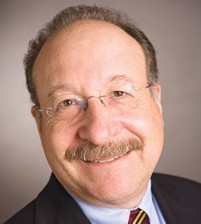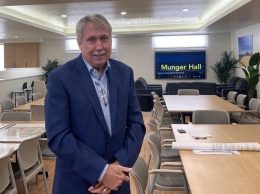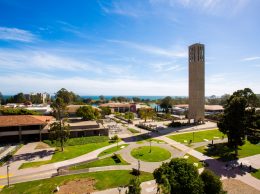Dubroff: UCSB diabetes researcher refines fine art of forecasting behavior
IN THIS ARTICLE
- Columns Topic
- Henry Dubroff Author
By Henry Dubroff Friday, January 16th, 2015

Henry Dubroff
As a newly minted manager at The Denver Post, I hired Steve Wilmsen, a promising reporter, to cover the banking beat. He was talented, fearless and led our coverage of the savings and loan crisis in the Rocky Mountain Region.
He was also a childhood diabetic and an early participant in a clinical trial for an insulin pump. The pump was far from perfect — it didn’t function particularly well at 5,280 feet and had a terrible time adjusting to the long hours and other quirks of the reporter’s life. That was in the early 1990s.
Fast forward 20 years, and many of the same problems remain in treating what’s called Type I diabetes. But Frank Doyle, a researcher at UC Santa Barbara, is edging much closer to a solution. His contribution to what has become a three-part system for managing insulin levels is software that anticipates what a patient’s insulin needs will be for the next few hours, creating a platform for continuous treatment in combination with a pump and a sensor that manages the pump’s activities.
“It’s the proverbial thermostat for the system that can do the calculations for the patient,” Doyle told me in a phone chat on Jan. 13. Now in small clinical trials around the nation and in Europe, Doyle’s landmark research has filled a crucial niche.
His work on the so-called artificial pancreas will be the topic of the Jan. 21 program at the MIT Enterprise Forum Central Coast. Doyle will be joined by investor and financier Fred Gluck, chair of CytomX, and Thomas Peyser, co-founder of a Silicon Valley company that’s worked closely with the artificial pancreas team at UCSB.
At its core, the product that Doyle has placed on smartphones or tablets for the most recent trials is a computational model that uses patterns of activity to predict human behavior in the most micro way. “It forecasts an hour or two into the future and figures out how to attenuate delivery and then increase insulin in a phased manner,” Doyle said.
The arc of Doyle’s career is framed by diabetes research that dates back to the early 1990s, about the time Wilmsen received his first insulin pump. Wilmsen went on to a successful career at The Boston Globe and Doyle has plugged away at a solution for management of insulin levels. A dozen years ago he landed at UCSB, where he found a fortunate partner in what’s now called the William Sansum Diabetes Center. The presence of the center is “why we had some magic in Santa Barbara,” Doyle said.
The collaborations that began with the Sansum Center have extended to Stanford, Yale and other research universities. The new insulin pumps are wireless, small and discrete, Doyle said while the management system his team at UCSB has created is hosted on a mini-tablet that’s kept in a fanny pack. The University of Virginia has moved the communications interface to a smartphone, something that makes Doyle a bit nervous. “How many of you have left yours at home,” he frequently asks trial participants. All hands go up, he said, something that really could put a participant at grave risk.
In the end, he said, the software will “live” on the pump or the sensor that now works in tandem with the pump. During most of the past couple of decades, the research effort Doyle has led has been five to 10 years away from commercialization.
But advances such as tablet technology and cloud computing mean that a fully commercial product might be within reach. Doyle said he’s begun looking for a partner to license the technology he’s developed and he thinks that within “two to three years there will be products on the market, first in Europe and in the U.S. shortly thereafter.”
Along the way, Doyle and his team have learned a lot about how to work with the FDA to propose and get approval for clinical trials. In a recent effort last year, they had an outpatient trial with 40 subjects.
When it’s fully commercial, Doyle believes the smartphone or tablet will only host a graphic interface that allows patients and health care providers to see what’s going on in real time. After 20 years of effort, Doyle, now 51, is on the precipice of seeing his career-defining research reach the market.












